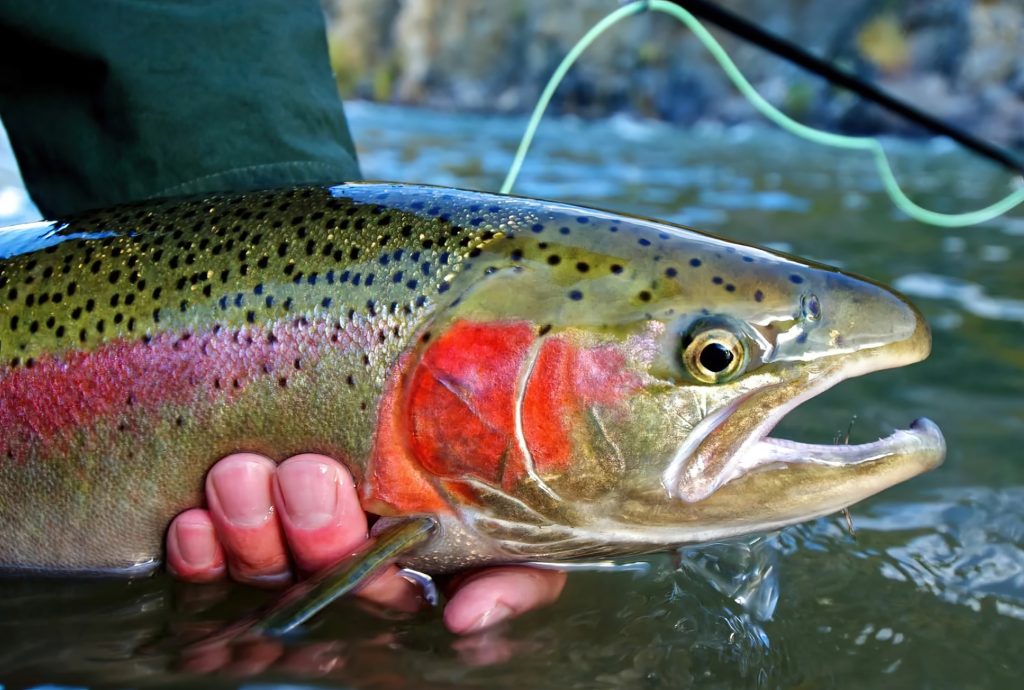Steelhead trout are one of the most sought-after game fish in North America. They are known for their strength and acrobatics, making them a challenge to catch. In this article, we will provide you with tips and techniques to help you catch more steelhead trout.
Understanding Steelhead Trout Behavior
Steelhead trout are fascinating anadromous fish that spend a part of their life cycle in freshwater and part in saltwater. They are known for their incredible ability to migrate hundreds of miles upstream to their natal streams to spawn. Steelhead trout can be found in rivers and streams throughout the Pacific Northwest and Great Lakes regions, and their behavior and feeding patterns can vary depending on the region and the time of year. These fish are most active during the fall and winter months, when they are spawning. Understanding their behavior and movements is crucial to successful steelhead trout fishing.
Finding Steelhead Trout
When it comes to finding steelhead trout, there are a few key things to keep in mind. Steelhead can be found in a wide variety of habitats, from small tributaries to large, wide rivers. When searching for steelhead, focus on areas where the water is deep enough for the fish to swim, but not so deep that they can’t be seen. In addition, steelhead trout are often found in areas with fast-moving water, as well as cover such as rocks and logs. These areas provide both shelter and opportunities for the fish to ambush prey. Look for riffles, runs, and pools, as well as areas where the water changes depth or flow. Keep in mind that steelhead often move around quite a bit, so don’t be afraid to explore and try different spots until you find where the fish are holding.
Choosing the Right Tackle
When it comes to catching steelhead trout, having the right tackle is crucial. The ideal rod for steelhead fishing is a medium to heavy action rod with a fast retrieve reel. The rod should be long enough to provide a good casting distance and the reel should have a high line capacity.
When choosing a fishing line, go for a high breaking strength, such as braided line, as steelhead trout can put up a strong fight. Fluorocarbon leaders are also a good choice because they are virtually invisible underwater. Another important component of your tackle is the sinker. Steelhead trout are typically found in deeper waters, so a heavy sinker is essential to get your bait or lure down to where the fish are hiding. It’s also a good idea to bring a variety of lures and baits to see what the fish are biting on. Overall, having the right tackle can make all the difference when it comes to successfully landing steelhead trout.
Bait and Lure Selection
Steelhead trout are opportunistic feeders and will eat a variety of bait and lures. Live bait, such as worms and eggs, are popular choices for steelhead fishing. If using live bait, it’s important to use a bait rig with a heavy sinker to keep the bait near the bottom. Artificial lures can also be effective for catching steelhead. Jigs, spinners, and spoons that mimic small fish or insects are popular choices.
Fly Fishing for Steelhead Trout
Fly fishing is a popular method for catching steelhead trout. When fly fishing for steelhead, it’s important to use a long, heavy rod with a fast action. You’ll also want to choose a fly line with a heavy sink tip to get your fly down to the bottom where steelhead are likely to be. Nymphs, egg patterns, and streamers are popular fly patterns for steelhead fishing.
Drift Fishing for Steelhead Trout
Drift fishing is another popular method for catching steelhead trout. When drift fishing, a baited hook is allowed to drift naturally with the current. This method is effective in areas with fast-moving water and cover, where steelhead are likely to be hiding. It’s important to use a sensitive rod with a light tip for detecting bites, as steelhead can be very subtle.
Float Fishing for Steelhead Trout
Float fishing is a technique that involves suspending a baited hook beneath a float. This method is effective in slower-moving water, where steelhead are likely to be holding. It’s important to use a sensitive rod with a light tip for detecting bites, as steelhead can be very subtle. Jigs, eggs, and worms are popular baits for float fishing for steelhead.
Final Thoughts
Catching steelhead trout can be a challenging and rewarding experience. By understanding their behavior, choosing the right tackle, and using the right bait and techniques, you can increase your chances of success. Whether you prefer fly fishing, drift fishing, or float fishing, there’s a method that will work for you. So get out there and start chasing those steelhead!

